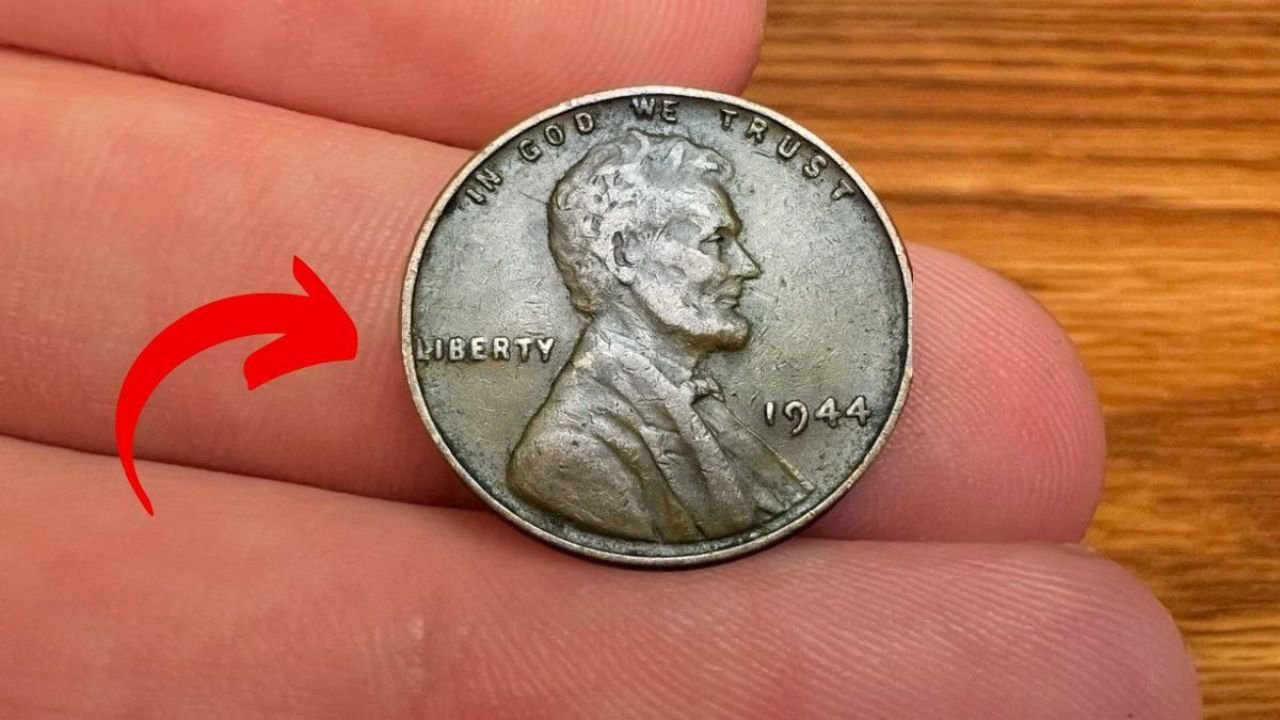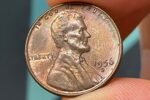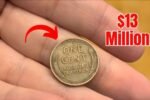The Lincoln Wheat Penny Valued at $4.2 Million : Have you ever spotted a penny on the ground and just walked on by? Most of us have. After all, it’s just a cent—nothing worth bending over for, right? But what if I told you that one of those humble copper coins could be worth more than a luxury car, a mansion, or even a private jet? One particular Lincoln Wheat Penny—yes, that common-looking cent—has been valued at an astonishing $4.2 million, and believe it or not, similar coins might still be floating around in everyday change.
Welcome to the remarkable world of rare coins, where history, mistakes, and curiosity combine to create fortunes.
A Penny That Changed American Coinage
The Lincoln Wheat Penny first entered circulation in 1909, designed to celebrate the 100th birthday of President Abraham Lincoln. It was the first American coin to feature a real person’s face—Lincoln’s dignified profile—rather than a symbolic image. Commissioned by President Theodore Roosevelt and designed by sculptor Victor David Brenner, the penny quickly became an icon.
On the front, it bore Lincoln’s image. On the back, two graceful wheat stalks surrounded the words “ONE CENT” and “UNITED STATES OF AMERICA”—a design so familiar it earned the name Wheat Penny.
These pennies were minted until 1958, and billions entered circulation. But among the ordinary, a few truly extraordinary pieces were struck. One, in particular, has stunned the coin-collecting world with its jaw-dropping price tag.
The Million-Dollar Mistake
During World War II, the U.S. Mint faced a materials crisis. Copper was urgently needed for ammunition, so in 1943, the Mint made a big switch. That year’s pennies were struck from zinc-coated steel, giving them a shiny silver color instead of the usual copper hue.
However, in the chaos of wartime manufacturing, a small number of leftover copper planchets (coin blanks) from 1942 accidentally made their way into the presses. The result? A 1943 Lincoln Penny was made from bronze instead of steel.
Only 20 to 30 authentic 1943 Bronze Pennies are known to exist today. They were never meant to be made—making them some of the rarest and most valuable coins in American history.
One of these rare 1943-D (Denver Mint) Bronze Pennies sold for $1.7 million back in 2010. More recently, another was valued at a mind-blowing $4.2 million.
Notable Lincoln Wheat Penny Values
| Year & Variant | Estimated Value | Notes |
|---|---|---|
| 1943 Bronze Penny | Up to $4.2 million | Only 20–30 known; wartime minting error |
| 1909-S VDB | $1,000 – $10,000+ | First-year issue; rare with initials |
| 1914-D | $2,000 – $10,000+ | Low mintage; highly collectible |
| 1922 “No D” | $500 – $10,000+ | Mint mark error; Denver mint |
| 1944 Steel Penny | $50,000 – $200,000+ | Mint mark error: Denver mint |
Could You Own One Without Knowing It?
One of the most thrilling aspects of the 1943 Bronze Penny is that it might still be in circulation. While most have been snapped up by collectors, stories still surface of people discovering them in dusty jars or family coin collections.
Take the story of a Massachusetts family who stumbled upon one in 2019 among their late father’s belongings. They had it authenticated and ended up selling it for over $200,000.
That’s the dream: to find hidden treasures in your own home.
How to Tell If Your Penny Is Worth a Fortune
Here’s what to look for if you want to go hunting through your change jar or old penny albums:
1. Check the Date and Color
A 1943 penny that looks like a normal copper penny (not silver/steel) could be the real deal.
2. Use a Magnet
Steel pennies will stick to a magnet. Bronze ones won’t. This simple test can help you separate common from curious.
3. Weigh It
- Bronze: About 3.11 grams
- Steel: Around 2.7 grams
A small kitchen scale can help narrow it down.
4. Look for a Mint Mark
- No mint mark = Philadelphia
- “D” = Denver
- “S” = San Francisco
(Denver and San Francisco bronze errors are even rarer.)
If you think you’ve found something interesting, have it professionally authenticated by a reputable coin dealer or grading service like PCGS or NGC.
Quick Penny Detection Guide
| Feature | Bronze (Rare) | Steel (Common) |
|---|---|---|
| Year | 1943 | 1943 |
| Color | Reddish brown | Silvery-gray |
| Magnetic? | No | Yes |
| Weight | ~3.11 grams | ~2.7 grams |
| Estimated Value | Up to $4.2 million | 1 cent |
Other Wheat Pennies That Could Make You Rich
The 1943 Bronze is the crown jewel, but it’s not the only valuable Lincoln Wheat Penny out there.
- 1909-S VDB: The debut design included designer Victor D. Brenner’s initials. Some thought they were too prominent and had them removed—making those with the initials extremely collectible.
- 1914-D: Scarce due to a low mintage.
- 1922 “No D”: A striking error caused the Denver mint mark to vanish.
- 1944 Steel Penny: The opposite of the 1943 error. Copper blanks replaced steel, but a few steel ones were mistakenly made.
These coins can sell for thousands—even hundreds of thousands—depending on their condition.
A Piece of American History in Your Pocket
The Lincoln Wheat Penny’s story isn’t just about money. It’s a story of American resilience, wartime manufacturing, accidental genius, and the possibility that extraordinary value might be hiding in the ordinary.
It has inspired generations of collectors and casual hobbyists to pay attention to the smallest things. Because sometimes, the tiniest coin can carry the biggest story.
So next time you see a penny—look twice. You might just be holding a piece of history worth millions.




